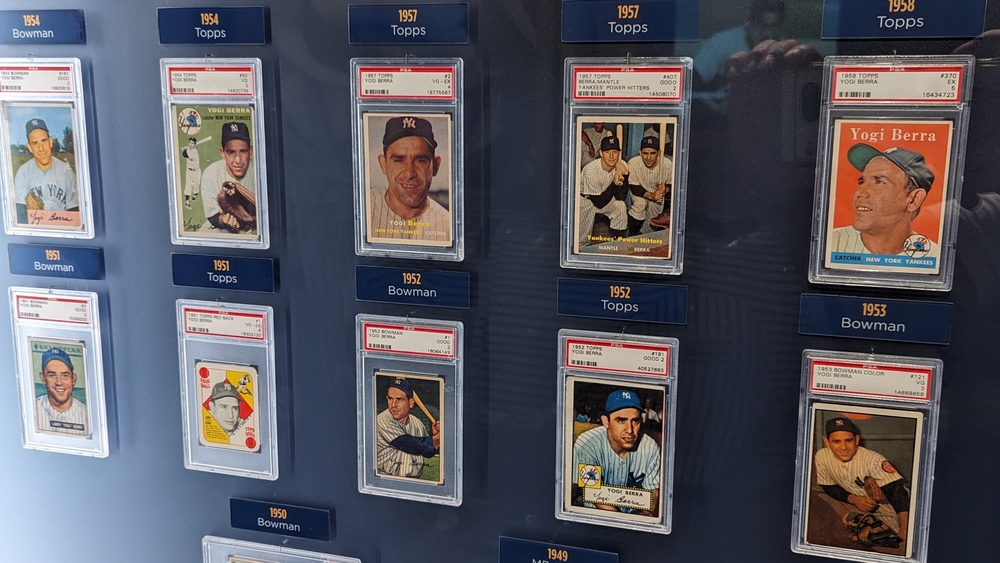10 Tips for Storing and Protecting Your Valuable Sports Cards
Storing and protecting your valuable sports cards is essential for maintaining their condition and preserving their worth. Whether you’re a seasoned collector or just starting, knowing the best ways to care for your cards can help prevent damage and ensure they remain in top shape. From choosing the right storage environment to using protective materials, there are several effective strategies to keep your collection safe for years to come.
This post may contain affiliate links, which helps keep this content free. Please read our disclosure for more info.
Maintain a Cool, Dry, and Dark Environment

When storing your valuable sports cards, the environment plays a crucial role in preserving their condition. Cards should be kept in a space that is cool, ideally between 60–70°F (15–21°C). Excessive heat or cold can lead to warping, bending, and damage to the card’s surface. Avoid areas like attics or basements, where temperature fluctuations are common.
A dry environment is equally important. High humidity levels can cause the cards to swell, bend, or even develop mold. Ensure the storage area has low humidity and no exposure to direct sunlight. Exposure to UV rays can fade the card’s ink and lead to irreversible damage over time. A dark, cool space helps protect your collection and maintain its value.
Use Penny Sleeves for Initial Protection

Penny sleeves are a budget-friendly yet essential tool for protecting sports cards. These lightweight plastic sleeves are designed to fit each card snugly, providing basic protection from dirt, dust, and minor scratches. They are perfect for the first layer of protection, allowing cards to remain visible and accessible while keeping them safe from everyday wear.
Although penny sleeves do not offer heavy-duty protection, they are an easy way to ensure your cards are kept in good condition during storage or handling. For especially valuable cards, consider using additional protective measures like toploaders or binders.
Use Toploaders for Extra Protection

Toploaders are thicker plastic cases that offer stronger protection than penny sleeves. They are perfect for more valuable or delicate cards that require extra safeguarding from bends or creases. To use a toploader, insert your card (protected in a penny sleeve) into the hard plastic casing. This additional layer helps prevent any physical damage that could occur during handling or if the card is stored alongside other items.
Toploaders also offer a great way to display cards while keeping them secure. They help protect the edges and corners, which are typically the most vulnerable parts of a card. If you have higher-value cards, investing in toploaders can prevent accidental bends or dings that may decrease the card’s worth.
Consider Using Team Bags for Added Security

For even more protection, especially when storing multiple cards, team bags can be a great option. These resealable plastic bags are larger than penny sleeves and can hold multiple cards at once. Team bags are especially useful for storing sets or cards from the same collection.
The resealable feature adds convenience, keeping dust and moisture out while making it easy to organize and access your cards when needed. This added layer of security helps reduce the risk of any unwanted elements getting into the bags and causing damage over time.
Use Archival Boxes for Long-Term Storage

When storing sports cards for the long term, archival boxes provide an excellent storage solution. These boxes are typically made from acid-free materials that protect your cards from external factors like dust, light, and humidity. Acid-free boxes prevent any deterioration to the cards, which is essential for long-term preservation.
Archival boxes also offer a neat and organized way to store your cards. Many of them come in standard sizes that can hold top-loaded cards or cards in penny sleeves, making it easy to keep everything in one place while ensuring it stays in pristine condition.
Store Cards Vertically in Boxes

For optimal storage in archival boxes, store your cards vertically, similar to how books are arranged on a shelf. This method helps prevent bending and creasing by ensuring that cards are aligned properly without unnecessary pressure. Using dividers or custom-sized boxes to keep the cards from shifting around is also a great idea.
Storing cards vertically reduces the risk of them being bent or stacked under heavy loads. It also makes it easier to access specific cards when needed. Just be sure to handle each card gently to avoid any accidental damage.
Avoid Rubber Bands for Binding Cards

Rubber bands are a common mistake when it comes to storing sports cards. While they may seem like a quick solution to keep a group of cards together, they can cause long-term damage. The pressure from the rubber band can leave permanent indentations or marks on the cards, especially along the edges.
Instead of rubber bands, consider using soft storage solutions like card binders, boxes, or card sleeves. These options will keep your cards secure without putting unnecessary pressure on them, preserving their condition for longer.
Use Binders for Easy Access and Display

Binders are a great way to organize your sports cards while keeping them protected. Using plastic pages that are specifically designed for card storage ensures that your cards stay in place without the risk of bending. Binders allow for easy flipping through your collection, making it a great option for those who like to display their cards or want quick access.
However, not all binders are created equal. Make sure to choose binders with acid-free, PVC-free pages that will not deteriorate over time. This ensures that your cards are protected from harmful chemicals that could affect their longevity.
Consider Custom Cases for High-Value Cards

For cards of higher value, consider investing in custom cases. These cases are often made from durable, clear materials like acrylic, which not only provides excellent protection but also displays the card beautifully. Custom cases are available in various sizes and designs, allowing you to showcase your most prized sports cards in a way that protects them from external damage.
While these cases can be more expensive than other storage options, they are worth the investment for those looking to preserve their collection in top condition. Custom cases often offer a higher level of security by preventing dust, scratches, or physical trauma to the cards, especially when placed on display.
Avoid Storing Cards in Attics or Basements

Attics and basements might seem like easy storage spaces for your cards, but they can be harmful to their condition. These areas are prone to extreme temperature fluctuations and humidity changes, which can warp, discolor, or degrade the cards over time. It is best to store your collection in a controlled environment with consistent temperature and humidity levels.
If you do not have an ideal storage space, consider investing in a small storage unit or a dedicated storage area within your home. Keeping cards away from areas with significant moisture or temperature changes is key to maintaining their value for the long term.
This article originally appeared on Avocadu.
